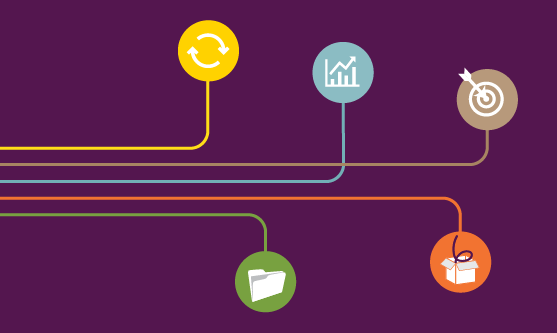
5 Ways to Make Your Passive Enrollment a Strategic Success

If 2017 is shaping up to be a year of few or no benefits changes for your organization, it also presents an incredible opportunity for you to do what you can’t in years when you have lots of new benefits to roll out: enhance the overall benefits value proposition of your current programs. It’s a perfect time to help your employees get the most from the programs you offer by helping them understand all their benefits—not just their medical insurance—and how, together, the programs can safeguard their health and financial wellness.
Remember that benefits are hard for most people to understand; for many employees, it’s just easier to make the same enrollment choices year over year, despite changes in the plans and in their lives. Outside of enrollment, most people don’t give benefits much thought until they need them. A passive enrollment offers you the opportunity to help acquaint—or reacquaint employees to the programs available to them.
You can explain how they can use their medical and work-life benefits to help them send their kids to college, pay for adult elder care, save for the future, spend less on out-of-pocket health care expenses, and help them afford lots of other expenses in their lives. This will help them make better choices—and use their benefits correctly.
Where to start? As we tell all our clients, always start with strategy. Passive or active, a successful enrollment hinges on effective benefits communication. Define your goals, identify your audience, and put in place a way to measure your success. Then reinforce the value of the programs you offer, and help connect employees to the ones that are right for them. Here are five ways you can make your passive enrollment a strategic success.
 1. Refresh or rebrand your benefits website.
1. Refresh or rebrand your benefits website.
Successful communication begins—and ends—with your benefits website. It’s where all your benefits information lives, and where employees and their families go for benefits information when they need it. So your site needs to be accessible to them—built outside your firewall so they can access information when they need it, wherever they are—and optimized for a mobile experience. It should include feedback mechanisms so you can capture and act on any comments your employees share about their benefits experience.
As you develop communications that drive employees to your website, don’t stop with enrollment. Reminding them about their benefits once a year isn’t enough to get them actively engaged in decisions about their health and finances. Use annual enrollment as a springboard for year-round benefits communication, breaking information into bite-sized pieces and using the right tools to feed it to the employees who are hungry for it. During open enrollment, start using the channels that will help you easily and cost-effectively communicate throughout the year: personalized emails improve engagement with their messages; social media is perfect for simple, conversational, ongoing communications; and blogs, microblogs such as Twitter, and videos are other great platforms you can start using today.
 2. Use data to drive engagement.
2. Use data to drive engagement.
Take a hard look at the data you have—including website metrics, benefit plan enrollment and participation, health and retirement account balances, income levels, family makeup, health status claims records, and other information that’s likely to tell you about your employees and their engagement with benefits programs. Are good programs going unused? Are employees losing out because they’re not using—or even aware of—specific benefits?
Successful benefits communicators think like marketers, using data to predict what employees need and want, and then targeting relevant products and services to them. You can use data to help your employees make good decisions and to support the programs you’ve put in place. The best way to do that is through targeting and segmentation.
 3. Target and segment your messages.
3. Target and segment your messages.
Communications are most effective when they’re very focused messages that nudge employees to take the next step, make better decisions, or use your plans and tools better. To create communications that have maximum impact, be thoughtful about whom you want to reach the most, how you can help engage them, and what action you want them to take.
Customize the messages to make them more accessible, engaging, and applicable. That’s the essence of targeting and segmenting communications—using the data you have to make your communications more relevant to specific populations of employees. For example, if data shows that a good majority of your eligible employees isn’t taking advantage of opportunities to make catch-up contributions to their HSA, target this group with personalized communications that explains why this is such an important benefit to use.
Targeting and segmenting your messages offers you another avenue for helping employees see the long-term picture of how health and financial security stack up so they can make good decisions now.
 4. Repackage your programs.
4. Repackage your programs.
Many employers offer core benefits as well as anywhere from a few to dozens of voluntary benefits that are designed to pick up where basic benefits end. Traditional and non-traditional, they include programs that support health and wellness as well as others that offer convenience. If you’re like most employers, you communicate the core benefits front and center, and if you mention the others at all, it’s merely in passing. Likewise, core benefits take center stage on your website, while voluntary benefits wait in the wings to be discovered. As such, they’re seldom appreciated, often missed, and regularly underused.
Use this opportunity to showcase both your core and voluntary benefits on your website. Then, package them in your communications so they appeal to the segments of your employee population who will be most interested. Take advantage of the fact that one size doesn’t fit all when it comes to benefits, or communication. Employees with growing families, for example, will care about flexible spending accounts that help them pay for childcare, as well as programs that support work-life balance. Others, closer to retirement, may be interested in maximizing savings for retirement and medical plans that cover long-term or chronic illness.
Share examples of how employees can use these benefits, in tandem with core benefits, for greater health and financial security, and illustrate who will get the most value from each benefit. This new perspective on benefits—in addition to year-round communication about them—will keep them top of mind so employees will use them when they need them.
 5. Do something unexpected.
5. Do something unexpected.
To grab your employees’ attention—and hold it—do something they don’t expect. People stop paying attention to things they see all the time. But they do notice when something’s new. So, make a change in the way you’re communicating about benefits.
To drive engagement in, say, a health screening, run a challenge or something fun like a scavenger hunt. Or, consider making a charitable donation as an incentive to drive action toward a specific goal. Try out a new communications channel or tactic to drive a specific action. Have you used social media to reach your employees? You can be sure they’re using it to talk to each other. One of our clients even served up benefits messages on cafeteria placemats. You’re only limited by your imagination.
These are just five ways employers can use a passive enrollment to increase benefits engagement. As you gear up for your annual event, listen to our master class, 10 Ways to make annual enrollment a success in an era of health care reform for others. You’ll find additional tips and tools on our website.

Jennifer Benz, SVP Communications Leader, has been on the leading edge of employee benefits for more than 20 years and is an influential voice in the employee benefits industry.
